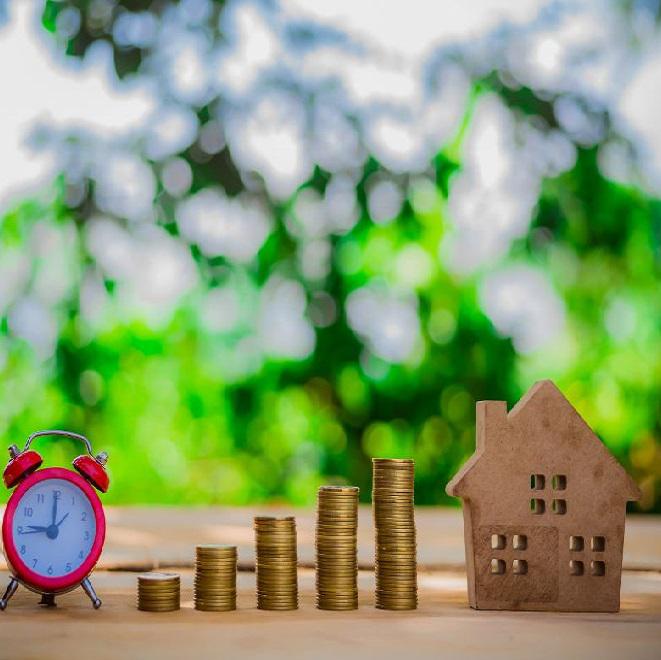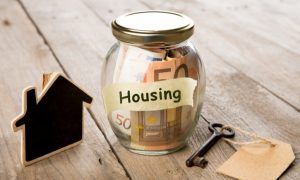Physical Address
304 North Cardinal St.
Dorchester Center, MA 02124
Physical Address
304 North Cardinal St.
Dorchester Center, MA 02124

It sounds so easy. You go home, put a “for rent” sign in the yard, a nice family moves in, and you start cashing monthly checks. I wish investing in real estate was that simple. The good news is that it’s not rocket science either, and you can be very successful in rental investing by understanding the basics and doing your due diligence. But first, you need to know how to buy an investment property and decide if it’s right for you.
Compared to other investment options, investing in rental properties requires you to be actively involved in the process. However, you should consider whether you have the time and desire to participate before you jump in.
If you’ve decided to buy an investment property outright, rather than passively invest through crowdfunding and real estate investment trusts (REITs), here are the steps you should take.
1. Secure your financing
2. Choose what you want to buy and where
3. Choose your strategy
4. Research and analyze
5. Always check
6. Make sure you’re covered
7. Submit your best offer
8. Weigh the risks and rewards
9. Accurately calculate the costs of owning a rental property
10. Learn to calculate cash flow and ROI
11. Know your legal obligations
Saving Money on Rental Properties If you don’t have a lot of cash on hand, you should finance your rental property purchase.

Before you start identifying the property you want to buy, you need to get pre-approved for a home loan. Just like getting a home mortgage, a bank or lender will look at your current income, credit score and other factors that indicate you’re a reasonable risk.
The best loan terms and interest rates are given to the lowest risk borrowers. That means you need to maintain a good credit score and keep your debt-to-income ratio below the bank’s requirements. You can use personal finance platforms to monitor your credit score and finances in general.
You also need to put more money down for an investment property loan than you would when buying your own home. Owner-occupied homes require a higher down payment because they pose more significant credit risk. Banks generally require at least a 20% down payment. Lenders will generally not consider the expected rental income that can qualify you for a loan.
You’ll also need to set aside enough cash. You will need at least three months of expected rental income for things like maintenance, potential vacancies and property costs. It’s a good idea (and will help your chances of qualifying for a loan) to pay off personal debt before you take on the responsibilities of owning and renting. If you need extra cash, you might want to consider a service like Hometap that invests in your home equity. You get the cash you need, and Hometap gets a portion of the proceeds when you decide to sell your home or if you decide to pay off the investment before the 10-year term is up.
Or if you prefer to get a loan for repairs and other unexpected expenses, you can use Monevo to compare loans and find the right one for you.
While most investors use a mortgage to finance the purchase of a rental property, there are other options to consider. You can even consider buying a rental with your IRA money.
single family homes One of the most important decisions is where to invest. There are some great rental markets in the United States and some not-so-great places where it is impossible to buy a rental property that generates positive cash flow. Explore home prices and rents (as well as other local details) to find the best places to invest in real estate.
Real estate markets are extremely local, and it pays to work with an investor-friendly local real estate agent who has access to real-time and historical data to help you find and acquire good rental properties. You can find one by using a free service like HomeLight, which will connect you with the top three agents in your area.
There are pros and cons to the types of rental properties to consider when choosing a location. You can choose a townhouse, condo, single-family home, or duplex. If you’re not the hands-on type, an apartment (where roofing and exterior maintenance isn’t your responsibility) might be a good starting point. A townhouse or duplex requires more maintenance than a condo, but not as much as a single-family home.
In addition to the types of rental properties, there are also different classes of rentals.
investment strategy Rental investing is a strategy that consists of buying a rental property, providing you with a monthly income. For a property to be cash flow positive, the rental income must exceed all the costs of owning and maintaining it. There are several ways to invest in rentals.
If you’re interested in the idea of investing in rental properties, but don’t want to worry about fixing toilets in the middle of the night, check out Roofstock. This is an investment platform that allows you to buy pre-screened properties. No need to lift any weights. Properties are managed by certified property managers (or you can choose to do it yourself if you prefer). There is only a 0.50% fee, so if you buy $100,000, you only have to pay $500. That’s a little cheaper than what a real estate agent would charge you.
Crowdfunding is a strategy that is more passive than owning real estate, which makes it a great strategy for beginners.
As a beginner, a great way to start investing is to “hack the shed”. This is a slang term for buying a rental property that you will live in while renting out part of it.
Often this happens in the form of buying a duplex. You live on one side and rent out the other side to tenants. Or if you’re single, buy a three- or four-bedroom single-family home and live in one room and rent out the extra rooms to friends or partners.
Ideally, housebreaking allows you to live rent-free because the rental income from your roommates (or tenants) is enough to cover all the costs of ownership.
One of the benefits of housebreaking is that you are on site to manage the property, so you don’t have to pay for property management when a tenant clogs the toilet. One downside, of course, is that you don’t like living in the same duplex as your tenants or sharing your home’s kitchen with roommates in a single-family residence.
Another option that offers a higher level of passivity than renting and managing yourself is buying a turnkey property. There are companies that are in the business of acquiring properties, converting them into market-ready rentals, and then selling them to investors.
In most cases, you buy a new or completely renovated property that is already rented out, and the janitorial company takes care of everything for you. That means you don’t have to worry about finding and selecting tenants, maintenance issues or general management. You’ll want to do your due diligence and understand what you’re investing in and the unique risks involved.
Another way to invest in rental real estate is to buy a single-family home and rent it out. The single-family home market is driven by more than just local buyers. In fact, even hedge funds have bolstered their intangible interest holdings by buying rental properties as ever-declining interest rates allow for higher returns on invested capital.
So what’s so great about single family homes? Low borrowing costs and excellent spreads between rental rates and mortgage payments. Elsewhere, investors are flooding the property market with fresh cash to get into the rental business. Read more about single family homes and why they can be a good investment.
Stock Market Research Be sure to do your due diligence on all aspects of every transaction. Many so-called “deals” are being promoted, but you want to make sure you’re doing it right. How much will the restoration cost? What are the monthly maintenance costs? What permits do you need and how long will it take to get them? The list of questions you need to answer is long.

Property is a big investment, not a consumer product that can be returned if you don’t like something. That crack in the foundation will need to be repaired, and it will be expensive. Mold on the back of a cabinet may require a professional mold remedy, which is also expensive. It’s too easy to get into the red on property. Confirm
Obviously, when evaluating offers, make sure your numbers are correct. I often see investors focus on the listing price of an active property (a similar property that is currently on the market) when evaluating a property’s rehab value. The list price of a property is really just an estimate that a homeowner or real estate agent comes up with. The true market price of a home is the final price agreed upon by the buyer and seller. Recently sold properties are more indicative of the market value of similar properties than active or even pending listings.
Researching and analyzing transactions requires knowledge, experience and persistence. And you’ll always regret it if you don’t do it thoroughly.
Home Inspection Never (and I mean never!) buy a home without seeing it. Even if I know the neighborhood and can see hundreds of photos online; Even if the price is so low that I know it will be snapped up quickly if I don’t act right away, I don’t make an offer on a property until I’ve seen it in person. The seller is not going to post a photo of standing water in the corner of the basement.
Hiring a licensed professional inspector is an essential step.
For example, the water heater may be working fine now, but the report shows that it has passed its expected life. You’ll want to know this so you can decide whether to replace it before you put tenants in the property or budget for an immediate replacement when it stops working.
I myself broke this rule and got burned. I decided not to inspect a house that was well maintained and looked great. Both the seller and I wanted to move quickly. I had my team ready to begin the renovation. All seemed well for my contractor and myself during the last walkthrough. I took the owner at his word that all systems and appliances were working. He lived at home and seemed trustworthy. But it turned out that the plumbing in the second bathroom needed to be completely redone. (The saleswoman probably didn’t know about the problems because she lived alone and only used one bathroom for years.) An inspection would reveal the problem. I could prevent repair costs that went over budget and diverted valuable rehabilitation resources from their intended use.
Tip for the investor. If you plan to rent the property, have your inspector do a rental inspection at the same time, which will save you time and money.
Get Insurance Rental property owners insurance is sometimes called “owner’s insurance” and is also known as a “house fire policy” or a “fire and special peril policy.” Homeowners insurance covers your home if it burns down or is broken into. And it pays medical and legal bills if someone is injured on your property. When you rent a home, there is a greater risk of loss for you and your insurer.
This insurance covers the home itself, other structures on the property (such as a garage or shed), the owner’s possessions (not the tenant’s), loss of rental income if the home is damaged and uninhabitable, and some protection against the owner’s liability. in case of injury or lawsuit; Read the fine print and all exclusions.
Homeowners insurance is a more expensive product that is necessary to help protect you, your property, and your renter. If you have a mortgage, your lender will require you to take it out.
Best Offer Make an informed offer in writing using state-approved contracts and keep it with proof of funds that you can and want to close if your offer is accepted quickly. Along with your offer, you’ll usually need a copy of the bank statement from which your down payment will come, a pre-approval letter from your lender if you’re financing the purchase, and a security deposit check.
There are many trading strategies out there and everyone seems to have an opinion on which one works best. However, after a few deals, I realized that haggling is mostly counterproductive (and very tedious very quickly). I initially make my best offer and walk away if it isn’t accepted. I don’t enjoy fighting. investing is not a sport. There is a price at which my numbers make sense. If I can’t get the asset at that price, I move on and look for a deal I can close where the numbers make sense.
Risks Owning a rental property is a long-term investment. Transaction costs are high, and real estate is an illiquid asset that you can’t sell quickly if you need cash. So be sure to do your due diligence and weigh the risks and rewards of investing in rental properties.
Budgeting Basic operating expenses that are easy to calculate and budget for on a monthly basis are:

Be sure to consider unexpected expenses as well. You will have regular maintenance costs, such as replacing air conditioning and air conditioning filters. And you’ll likely have repair costs that vary from year to year, depending on when appliances break or wear out and need to be replaced.
The initial purchase of a property has one-time costs, including closing costs (such as conveyancing and recording fees), lender and title company fees, and reserve items such as property taxes and mortgage insurance. Budget for future expenses like a new roof, water heater, and appliances.
profit margin How will you know if you will make money from your rental? There are many factors, but a quick calculation of your return on investment (ROI) and cash flow will help you assess whether a property will make a great rental investment.

Legal obligations when buying an investment property A lease is a legal contract that binds both the lessor and the lessee. State and local laws vary, but generally, landlord-tenant law addresses five aspects of the relationship:
As a landlord, you enter into a legal agreement that allows tenants to occupy your property. It should provide “safe and livable” conditions. This means that you need to address property maintenance issues in a timely manner. And you must respect your tenant’s property rights. you may not enter the property without proper notice.
A rule of thumb that most investors use when assessing the viability of a rental property is the “1% rental multiplier rule”. Monthly rental income should be less than or equal to 1% of your initial investment. Therefore, if your total cost to prepare the property for rent (purchase price, closing costs, renovations) is $150,000, the property must rent for at least $1,500 per month, not including HOA or condo fees.
Of course, real estate markets vary greatly across the country. In some metropolitan areas, it is common to charge rents above 1%. But there are a lot of places where it’s hard to get anything close to 1%. In such areas, what makes other factors can determine a good investment property.